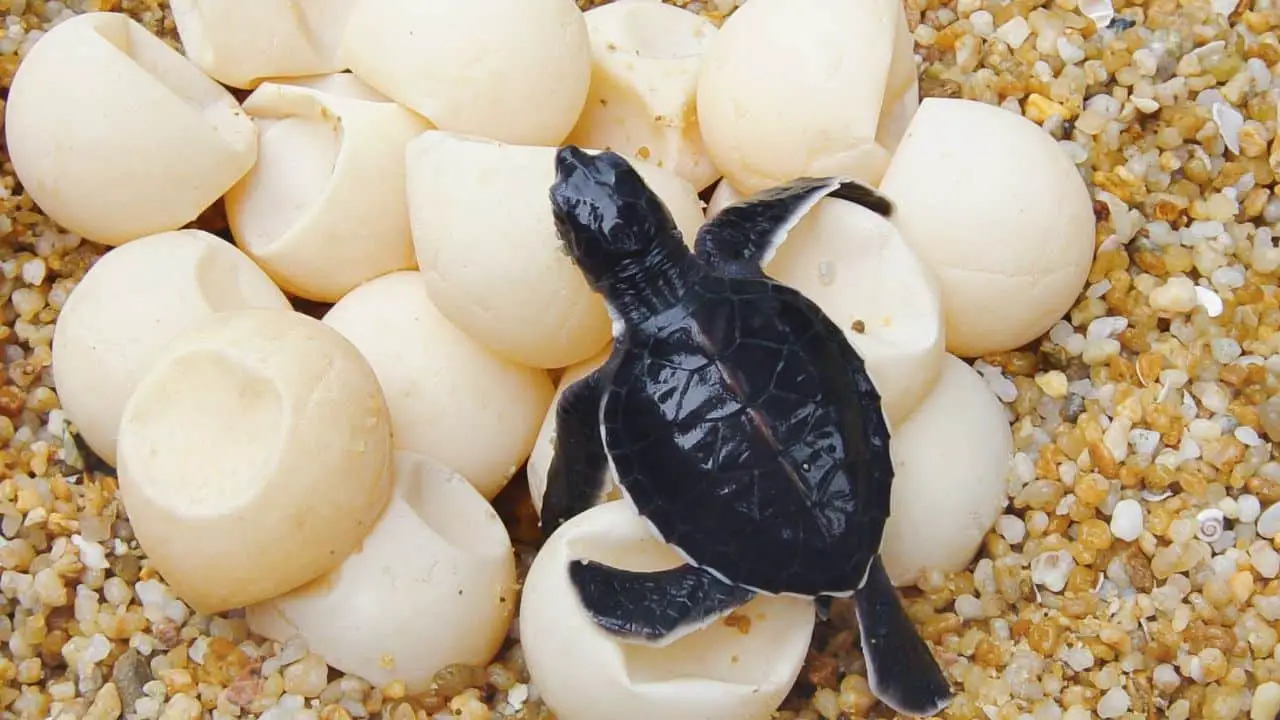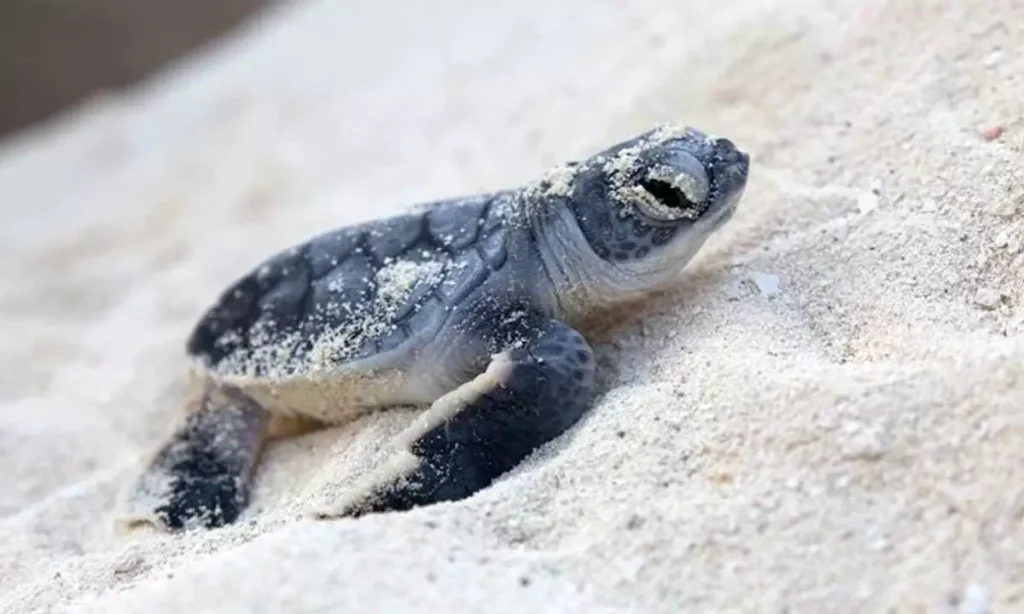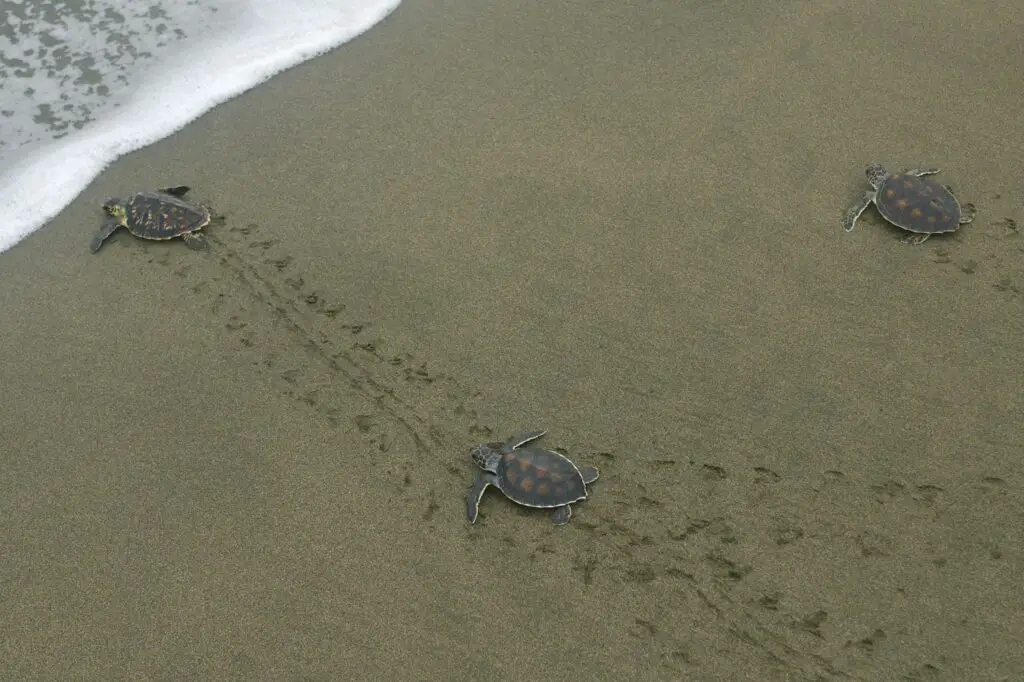When Do Sea Turtles Lay Eggs

Introduction
When Do Sea Turtles Lay Eggs: The annual ritual of sea turtles laying their eggs is a captivating natural phenomenon that has fascinated scientists and nature enthusiasts for generations. These magnificent marine creatures, known for their ancient lineage dating back millions of years, embark on a remarkable journey from the depths of the ocean to the sandy shores where they lay their precious eggs.
Sea turtles are renowned for their unique life cycles, with different species exhibiting varying nesting behaviors and preferences. Understanding the timing and circumstances of when sea turtles lay their eggs is crucial for their conservation and protection. This knowledge helps conservationists and researchers implement measures to ensure the survival of these endangered reptiles.
In this exploration, we delve into the intricacies of sea turtle nesting, shedding light on the questions of when, where, and how they lay their eggs. We will uncover the factors influencing their nesting patterns, the remarkable navigational abilities that guide them to their birthplaces, and the threats they face in the modern world.
Join us on a journey to the world’s coastlines, where the story of when sea turtles lay their eggs unfolds. From the spectacular arribada events of olive ridley turtles to the solitary nesting habits of loggerheads, turtles journey promises to be an enlightening and inspiring experience, offering insights into one of nature’s most captivating spectacles.

Do sea turtles only lay eggs at night?
Sea turtle nesting often occurs at night, underneath the stars and the moon. Some advantages of nocturnal nesting include, no threat of overheating in the sun and fewer predators on the beach at night.
Nocturnal nesting offers several advantages for sea turtles. The cover of darkness provides some protection from predators, and cooler temperatures during the night reduce the risk of overheating for both the mother turtle and the developing eggs.
Loggerhead and leatherback sea turtles are known for their preference for nighttime nesting. These species tend to come ashore under the veil of darkness to dig their nests and deposit their eggs in the sandy beach. The darkness also makes it less likely for these turtles to be disturbed by human activities, such as beachgoers and artificial lights.
However, not all sea turtle species adhere strictly to nighttime nesting. The olive ridley, for example, is famous for its arribada, a mass nesting event that often occurs during the day. Thousands of olive ridley turtles gather on certain beaches during daylight hours to lay their eggs simultaneously. This unique behavior remains one of the most astonishing natural spectacles in the animal kingdom.
While nighttime nesting is a common behavior among sea turtles, the timing of egg-laying can vary depending on the species and, in the case of olive ridleys, can even occur during the day as part of their remarkable mass nesting behavior.
Do turtles lay eggs all year round?
In most species, eggs are laid annually; a few species lay every other year, and some lay twice in one nesting season. The sea turtles generally nest in three- to four-year cycles, the female usually laying multiple clutches of eggs during each nesting season.
The timing of when turtles lay eggs is influenced by various factors, including environmental conditions, temperature, and the species itself.
Most terrestrial and freshwater turtles have specific nesting seasons that coincide with favorable conditions. In temperate regions, for instance, turtles often lay their eggs during the spring and summer months when temperatures are warmer, and there is an abundance of food. This ensures that the hatchlings have the best chance of survival when they emerge from their nests.
On the other hand, some tropical turtle species may exhibit more year-round nesting activity due to the relatively stable environmental conditions in their habitats. However, even among these species, there tends to be a peak nesting season when a higher percentage of egg-laying occurs.
Marine turtles, such as loggerheads and green turtles, also have distinct nesting seasons, typically nesting during the warmer months of the year. These species migrate long distances to reach their nesting beaches, and the timing of their migrations and nesting is synchronized with ocean currents and temperatures.
While there are exceptions, most turtle species exhibit seasonal egg-laying patterns, ensuring that their offspring have the best chance of survival in conditions favorable for their development.
What time do sea turtle eggs hatch?
How many turtle babies hatch at one time? A nest of circa 115 eggs (see question 10) will typically hatch anytime between 50 and 60 days after the nest is laid, but it could be five days on either side (rarely more). Hatching typically occurs between 9 pm and 5 am. Nature does not perform to a human timetable.
The time at which sea turtle eggs hatch depends on various factors, including the species of sea turtle, incubation temperature, and environmental conditions. On average, sea turtle eggs typically hatch between 45 to 70 days after they are laid. However, this can vary.
For instance, loggerhead and green turtle eggs typically incubate for around 55 to 60 days, while leatherback eggs tend to take a bit longer, often closer to 60 to 70 days. Hawksbill turtles generally have a shorter incubation period, around 50 to 60 days. The exact duration can be influenced by factors such as the temperature of the nest, with warmer nests generally resulting in shorter incubation times.
The timing of hatching is also influenced by environmental factors like the moisture content of the sand and the presence of light. Sea turtle hatchlings are highly sensitive to light, and they tend to emerge from their nests during the cover of darkness, as this reduces their vulnerability to predators.
Hatching often occurs at night to provide the hatchlings with the best chance of reaching the sea safely. Once they emerge from the nest, these tiny, determined creatures instinctively follow the moonlit or starlit reflections on the water, guiding them towards the ocean where they begin their remarkable journey at sea.
Do turtles lay eggs without mating?
Turtle Reproduction: Facts
Female turtles may develop eggs even if they have not mated. Animals that have mated in the past may retain sperm for years, so it’s always wise to incubate any eggs that are produced.
Turtles, like many reptiles, typically require mating to reproduce and lay fertile eggs. The female stores the sperm and then fertilizes her eggs as she lays them. This ensures that the eggs are viable and capable of developing into hatchlings.
However, there are exceptions to this rule. Some species of turtles, particularly certain freshwater turtles and tortoises, have been known to exhibit a phenomenon called parthenogenesis. Parthenogenesis is a form of asexual reproduction in which females can produce offspring without mating with a male. In these cases, the female’s eggs develop into embryos without external fertilization.
While a few turtle species can reproduce without mating through parthenogenesis, the vast majority of turtles rely on mating to fertilize their eggs and ensure the genetic diversity necessary for the survival and adaptation of their populations. Mating remains the primary and most common method of reproduction for turtles.
Why do sea turtles cry when laying eggs?
Nesting sea turtles appear to shed tears, but the turtle is just secreting salt that accumulates in her body. Many people believe that while laying her eggs a sea turtles goes into a trance from which she can not be disturbed.
Sea turtles do not cry when laying eggs in the emotional sense that humans do. However, the phenomenon you may have heard about is related to the physical process of nesting.
When female sea turtles come ashore to lay their eggs, they may appear to be shedding tears, but this is not due to sadness or emotion. Rather, it is a natural response to help them remove excess salt from their bodies. Sea turtles have specialized glands near their eyes that excrete excess salt, which accumulates in their bodies due to their marine environment. These glands help maintain the turtle’s salt balance, which is essential for their survival in saltwater environments.
So, what might look like “crying” is actually an important physiological adaptation that helps sea turtles survive in their salty ocean habitat. These so-called “tears” also serve to keep their eyes moist on land, preventing them from drying out while they are out of the water during nesting.
Sea turtles do not cry in the way humans do due to emotions. The “tears” observed during nesting are a vital part of their physiological adaptation to maintain their salt balance and keep their eyes lubricated while on land.
What is the lifespan of a sea turtle?
50-100 years
Once in the water, hatchlings are consumed by seabirds and fish. Few survive to adulthood, with estimates ranging from one in 1,000 to one in 10,000. Sea turtles’ natural lifespan is estimated to be 50-100 years. An adult hawksbill sea turtle eats an average of 1,200 pounds of sponges a year.
Sea turtles, ancient mariners of the oceans, possess a lifespan that spans several decades. The duration of their lives varies among different species. The leatherback turtle, renowned for its distinctive leathery shell, can live up to 45 years or more. Loggerheads, recognized by their powerful jaws, typically reach ages of 50 to 70 years. Green turtles, known for their herbivorous diet, share a similar lifespan with loggerheads. Hawksbill turtles, distinguished by their pointed beaks, usually live between 30 and 50 years. Kemp’s ridley turtles, the smallest and most endangered species, have a relatively shorter lifespan, averaging around 20 to 30 years.
The life journey of a sea turtle is fraught with challenges from the moment they hatch on sandy shores. They face predation, pollution, and habitat loss, making survival a formidable feat. Additionally, human activities such as fishing, poaching, and climate change pose significant threats to their existence.
Conservation efforts have become paramount in ensuring the continued presence of these remarkable creatures in our oceans. By safeguarding their habitats, regulating fishing practices, and raising awareness, we strive to extend the lifespan of these awe-inspiring creatures for generations to come.
Are there efforts to protect sea turtle nesting sites?
There are extensive efforts worldwide to protect sea turtle nesting sites. Conservation organizations, government agencies, and local communities collaborate to safeguard these critical habitats. Coastal regions where sea turtles lay their eggs are designated as protected areas or sanctuaries. These sites are often monitored by trained professionals and volunteers who work tirelessly to ensure the safety of nesting turtles and their offspring.
Conservationists employ various strategies to protect nesting sites. They install physical barriers like fences and signs to prevent human interference. In some areas, restrictions on beachfront development and nighttime lighting ordinances are implemented to minimize disruptions to nesting turtles. Educating local communities and tourists about the importance of these nesting sites and responsible behavior on the beach is also a crucial aspect of conservation efforts.
Additionally, researchers use advanced techniques like satellite tracking and GPS to monitor the movements of sea turtles, providing valuable data to inform conservation strategies. Nesting beaches are regularly surveyed to record nesting activities and identify trends in population numbers.
International agreements and conventions, such as the Convention on Biological Diversity and the Convention on the Conservation of Migratory Species of Wild Animals, further support global efforts to protect sea turtle nesting sites. These collaborative endeavors are vital in ensuring the survival of these ancient marine creatures and preserving the biodiversity of our oceans.
What happens after sea turtle eggs hatch?
After sea turtle eggs hatch, a remarkable journey begins for the tiny hatchlings. They instinctively make their way towards the brightest horizon, which is typically the open expanse of the ocean. This crucial phase is fraught with challenges. Hatchlings face predators such as birds, crabs, and fish during their mad dash across the sand. Those that reach the water must contend with hungry predators in the shallows.
Once in the ocean, the young turtles embark on a perilous journey called the “swim frenzy.” They paddle vigorously, utilizing a burst of energy to propel themselves into the open sea. During this period, they are highly vulnerable to predation, and only a fraction of them will survive to adulthood.
As the hatchlings venture further into the ocean, they enter the vast realm of marine life. They become part of a complex ecosystem, facing a multitude of challenges including finding food and avoiding larger predators. Depending on the species, it can take several years for sea turtles to reach sexual maturity.
Their migratory patterns may lead them across entire ocean basins, and they may return to coastal areas only when it’s time to nest. This awe-inspiring journey underscores the incredible resilience and adaptability of these ancient creatures, while highlighting the importance of protecting their habitats and nesting sites.

Conclusion
The timing of when sea turtles lay their eggs is a critical aspect of their remarkable life cycle, deeply intertwined with their survival and conservation. We’ve explored the incredible diversity of sea turtle species and their unique nesting behaviors, from solitary nesters like loggerheads to the mass nesting spectacles of olive ridleys.
Understanding the factors that influence their nesting season, such as environmental cues and geographic location, is fundamental for their protection. Conservation efforts aimed at preserving nesting habitats, reducing light pollution, and mitigating the impact of climate change play a vital role in ensuring the continued success of these ancient reptiles.
Moreover, the challenges faced by sea turtles in the modern world, including habitat loss, pollution, and accidental bycatch in fishing gear, emphasize the urgency of conservation initiatives. By raising awareness and fostering responsible tourism practices in sea turtle nesting areas, we can contribute to their well-being.
The awe-inspiring journey of sea turtles, from the depths of the ocean to the sandy shores where they lay their eggs, is a testament to the resilience and wonder of the natural world. Preserving their nestingturtles facts and protecting their vulnerable hatchlings is not just a responsibility; it’s a privilege. As we continue to learn more about these magnificent creatures, let us also commit ourselves to their preservation, ensuring that future generations can witness the beauty of sea turtles laying their eggs for many years to come.



